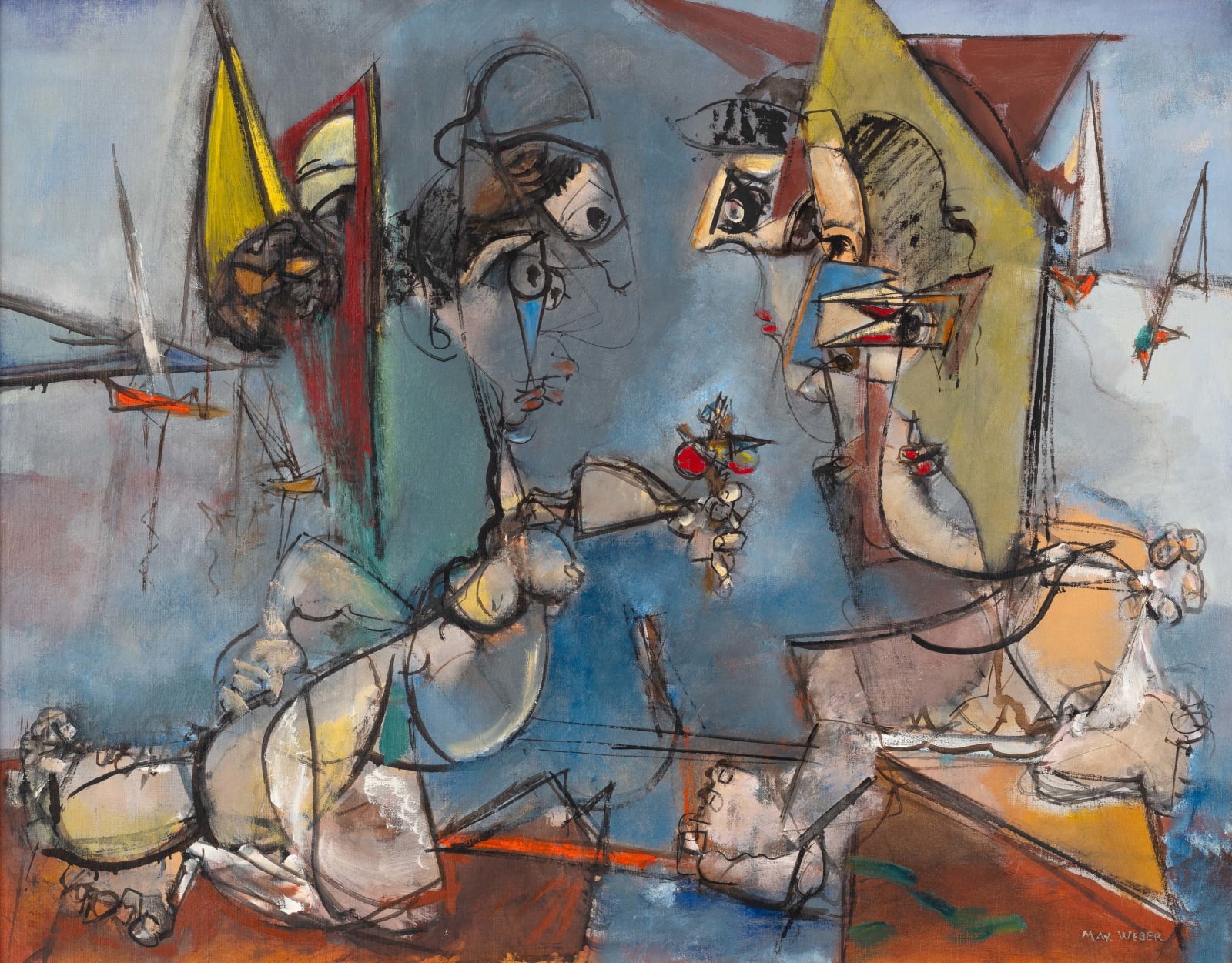Max Weber American, 1881-1961
71.1 x 91.4 cm
Schoelkopf Gallery is the exclusive worldwide representative of the Max Weber Foundation.
Bathers (1946) exemplifies a pivotal episode in Max Weber’s creative development beginning in 1944 when he began working in a radical style in which color is divorced from form and the importance of line holds increased significance. In his catalogue for the 1949 Max Weber: Retrospective Exhibition, Former Director of the Whitney Museum of American Art Lloyd Goodrich observed this period to be one of the most important in Weber’s body of work: “Especially in the years 1944 to 1946 he produced a whole series of capital works that are among the most original and imaginative of his entire career. This remarkable flowering was doubtless partly a response to growing recognition… Movement became more intense, linear pattern took on a new importance, color lost its literal relation to form and gained a new range and brilliance, and design became more complex, achieving a richness beyond anything he had attempted since his earlier abstract work” (Lloyd Goodrich, Max Weber: Retrospective Exhibition, New York: Whitney Museum of American Art, 1949, p. 53).
Bathers traces breakthrough creative innovation that emerged in Europe and New York during and directly following World War II. For instance, the combination of a spatially ambiguous setting and fractured multi-planar forms inspired by Cubism finds parallels in Chilean Surrealist painter Matta’s Duchampian suite—abstract imagined landscapes with a strong linear emphasis that evolved out of his earlier psychological morphologies (e.g., Untitled, 1942–43; Thyssen-Bornemisza Museo Nacional, Madrid). This displaced and fragmented dimensional space mirrors the psychological disembodiment resulting from the atrocities of World War II, recalling Pablo Picasso’s depiction of violence of the Spanish Civil War in Guernica (1937; Museo Nacional Centro de Arte Reina Sofía). Weber’s unique take on Cubism with an emphasis on line and use of color distinct from shape anticipates later developments advanced by subsequent generations of artists, such as contemporary painter George Condo’s Psychological Cubist works.
Provenance
The artist; toEstate of the artist, 1961; to
Max Weber Foundation, 2021 until the present
Exhibitions
Art Institute of Chicago, Illinois, 58th Annual American Exhibition Paintings and Sculpture, 1947Whitney Museum of American Art, New York; Walker Art Center, Minneapolis, Max Weber Retrospective Exhibition, Whitney Museum of American Art, February 5—March 27, 1949
California Palace of the Legion of Honor, San Francisco, California, 1949, no. 75
Philbrook Museum of Art, Tulsa, Oklahoma, Models & Muses: Max Weber and the Figure, November 4, 2012–February 3, 2013, no. 47
Literature
Lloyd Goodrich, Max Weber Retrospective Exhibition, New York: Whitney Museum of American Art, 1949, p. 62, no. 75, illus. p. 51Catherine Whitney and Percy North, Models & Muses: Max Weber and the Figure, Tulsa: Philbrook Museum of Art, 2012, p. 124, no. 47, illus. in color p. 125
Subscribe to our mailing list to receive updates from the gallery
* denotes required fields
We will process the personal data you have supplied in accordance with our privacy policy (available on request). You can unsubscribe or change your preferences at any time by clicking the link in our emails.

